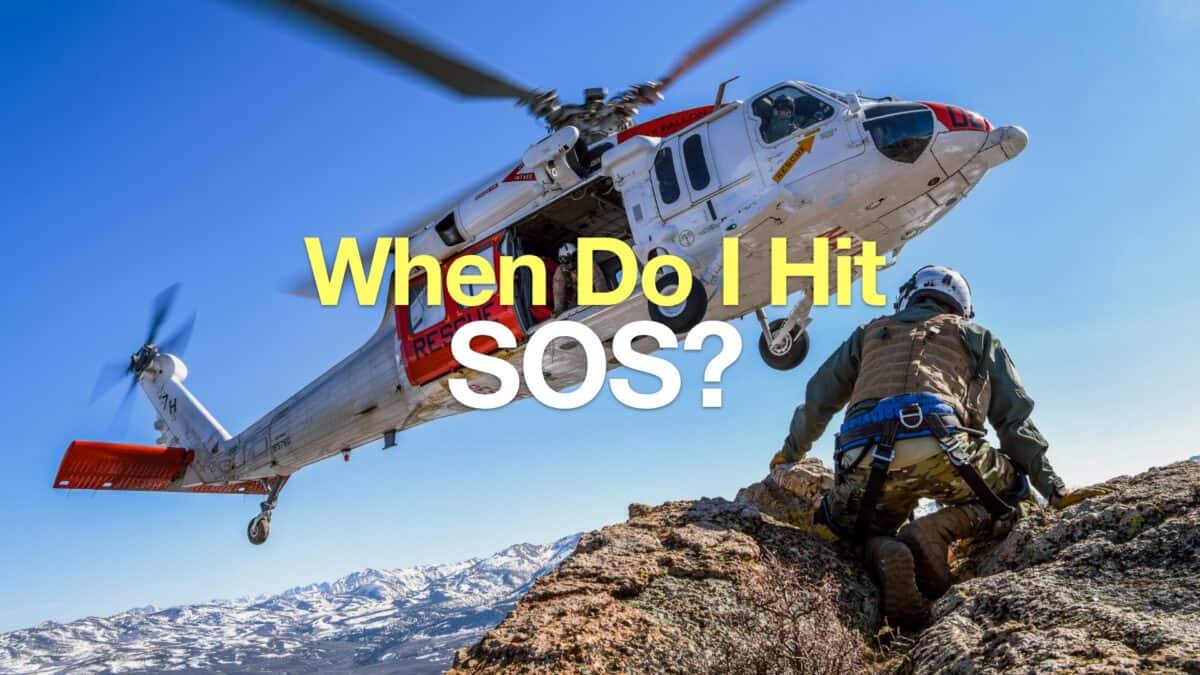

What Happens When You Hit SOS
It's easy to find out what happens on your inReach device when hitting SOS, but what happens after that can vary greatly. In this guide I'll help you set your expectations accordingly.
- Who Will Rescue You?
- Is There a Standard for Backcountry Rescue?
- What You Can Do?
A recent YouTube video by John Conte highlighting his experience with the inReach SOS button has sparked interest and raised questions about the effectiveness of such satellite communicators in emergency situations. While the expectations of a quick and efficient rescue akin to a 9-1-1 service may be natural, the reality of inReach SOS calls can be quite different. In this article, we will delve into the details of what truly happens when the SOS button is activated, addressing both the expected and unexpected aspects of the rescue process.
When it comes to initiating an inReach SOS call, several factors come into play, determining the course and timeline of the rescue operation. The location of the distressed individual, whether they are in a rainforest, an open area, near a trail, or on the side of a cliff, plays a crucial role. The availability of resources, such as helicopters, specialized teams, and local search and rescue capabilities, also influences the speed and effectiveness of the rescue. Additionally, the severity of the situation and prevailing weather conditions significantly impact the rescue timeline.
One significant aspect that must be understood is the lack of a standardized backcountry search and rescue protocol in the United States. The approach varies from state to state and even county to county. While some regions, like California, Oregon, Washington, and Colorado, have established laws and regulations defining responsibilities and setting training standards, others have no specific guidelines in place. In such cases, the response may rely on local individuals or groups without specialized training, making the rescue process less predictable.
The entities responsible for conducting backcountry rescues can vary widely. Contrary to the notion of dedicated rescue teams, often seen in movies or TV shows, the reality is quite different. In most cases, the rescuers are not full-time professionals solely dedicated to rescue operations. They may be park rangers, sheriff's departments, state police, fish and game wardens, or even volunteers. The level of training and available resources also differs, depending on the location and jurisdiction. While some areas have dedicated teams with proper training, others rely on the goodwill of volunteers or nearby individuals.
It is important to note that the online shaming and criticism experienced by John Conte after his rescue request is not reflective of the typical search and rescue experience. Rescuers are committed to saving lives and do not judge individuals in distress. Their focus is solely on providing assistance and ensuring the safety of those in need. While there may be instances where the responding team lacks expertise in backcountry rescues, most rescuers act with good intentions, even if their training is limited.
What You Can Do
To avoid potential complications during a rescue operation, it is crucial to be adequately prepared and informed. Bringing essential supplies and being ready to spend a night outdoors until rescue arrives is a primary consideration. Familiarizing yourself with the surrounding area and identifying potential exit points or access to roads can provide additional options for self-evacuation if necessary. When planning a hike or outdoor adventure, it is advisable to contact the land manager, such as a park service or BLM field office, to inquire about their specific rescue procedures and previous experiences. This communication can offer valuable insights and help set appropriate expectations.
Need More Info?
- Have a question about the guide? Join my Patreon and ask me a question.
 Who pays for a backcountry rescue?
Who pays for a backcountry rescue? How to Hike
How to Hike Garmin inReach
Garmin inReach Best Hiking Gear 2024
Best Hiking Gear 2024 Hiking Boots or Shoes: Do I Really Need Hiking Boots?
Hiking Boots or Shoes: Do I Really Need Hiking Boots? When to Hit SOS on inReach
When to Hit SOS on inReach